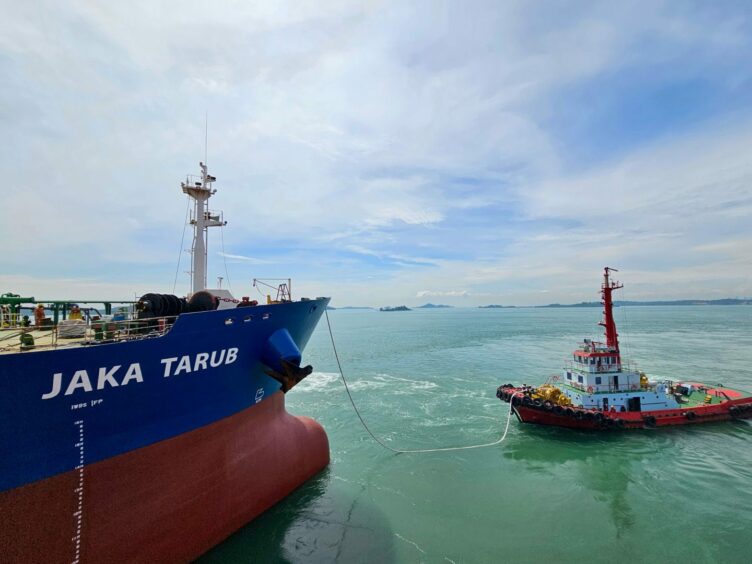
Valeura Energy (TSX:VLE) has reached an inflection point with the acquisition of assets in Thailand from Mubadala Energy, transforming it from a minnow to the second largest producer in the country.
The company reached a deal with Mubadala in December 2022, completing it in March. Valeura paid $10.4 million for the assets, with a contingent payment of $50mn, which may be triggered by certain future prices.
The deal sees Valeura gain 21,200 barrels per day of net production on closing, with pre-tax cash flows of around $30mn per month.
Valeura CEO Sean Guest said the company had, before 2022, been focused on the Mediterranean and Turkey. Guest’s background was in Asia and he helped drive that strategic shift.
The company first bought bankrupt KrisEnergy’s two licences.
Guest explained that the price paid for these was “very cheap”, while they had growth potential and “very significant tax losses”.
The process to execute the second deal, with Mubadala, was much more competitive, he said, and a substantially longer process. “That deal did not start as a $10 million deal, the effective date was much earlier, the price was much higher and it was a negotiation over an extended period.”
Doing deals
And the company is hungry for more.
“We’re still looking for the next big thing. Now, the next big thing has to be very significant in size but we still see the opportunity in Asia for finding more of these types of opportunities,” Guest said, speaking in London.
Valeura does not intend to pay out dividends, but rather to focus on growing the company further. “If a few years from now and we still don’t see accretive deals then we’re going to envision how we might return cash to shareholders.”
One next step for Valeura may be a move into gas. Guest noted his background included Shell and Woodside, where gas developments have always featured highly.
“We will definitely look at development type opportunities. Exploration, I think, is still a bit out of phase,” he continued. Some exploration around existing infrastructure – so-called ILX work – is the closest the company would come at this point.
Support for doing deals has been buoyed as a result of the European gas supply crisis, the CEO said. “There’s an appreciation that we’re going to need hydrocarbons and I think the money markets are seeing that as well,” he said, even while “trying to get an RBL from a bank is not going to happen”.
Guest acknowledged there had been some discussions around a listing in Australia, where investors have proved supportive of commodity plays.
While Asia is concerned with energy security, Asian investors have proved hard to convince about putting their money into growth companies.
Fieldwork
The company has work to do on the fields it has acquired. It forecasts operating costs this year at $220-240mn, with capital spending of $180-200mn.
Under the deal with Mubadala, Valeura acquired a 100% stake in Licence B5/27, which holds the Jasmine and Ban Yen oilfields. It also gained a 90% operated working interest in G11/48, which holds the Nong Yao field, and a 70% operated working interest in G1/48, which has the Manora field.
Jasmine is the largest, producing 9,000 bpd. Nong Yao is producing 7,100 bpd and Manora at 3,200 bpd. The company expects Jasmine and Manora to stay level, while increasing Nong Yao to 11,000 bpd in 2024.
At the mid-point of production guidance, of around 21,000 bpd, production costs will be around $30 per barrel.
Infill drilling at Nong Yao aims to access some deeper sands, Guest said, taking production up. “A year from now we may have 25,000-30,000 bpd.” Part of this will come from the restart of the Wassana field, due in May, and expected to contribute 2,200 bpd this year.
Valeura will carry out infill drilling at Wassana this year, which should increase output to around 4,500 bpd. It will drill five wells off the facility, with another five coming at some point in the next few years.
The outlook on Rossukon is a little less certain. The field is another acquired through the purchase of KrisEnergy’s assets. Valeura has no planned spending on Rossukon this year.
“I think people have recognised there’s a question mark as to how we might go forward there. We’re trying to come to an agreement with the partner in the field. But there’s a reason that we paid zero for Rossukon, with only contingent payments. We’re still trying to achieve something in that block to get and extract some value from it, but we’ll see in what form.”
Adding up
Fields in the Gulf of Thailand have proved that they can keep on adding reserves, Guest said. The operator took a final investment decision on the Jasmine field with 7 million barrels of recoverable oil, he said.
“It’s now got an [estimated ultimate recovery] of over 100 million barrels and we still show 10 million barrels of reserves looking forward.” Nong Yao is similar, he said. “Each year for the past six years, they’ve produced half of the 1P, and yet at the end of every year the 1P is about the same.”
At some point, these fields will run down, Guest acknowledged, but even just getting an extra year of production is a “huge win for us and for our shareholders”.
In order to sustain this, the fields need significant drilling and workovers each year. Valeura has had a rig working on Jasmine since January, with another month or two of work still to go.
While Valeura is a small company, the acquisition saw it gain the entire Mubadala team that had been working on the assets – minus the Emirati country manager.
Mubadala sold out in order to carry out a shift from oil and into gas. As such, the company was not able to bring the same level of interest to the Thailand assets as Valeura, Guest said.
A March report from Welligence Energy Analytics highlighted that Thailand’s gas production is falling, making the country more and more reliant on LNG imports. The report, by Marc Howson, noted similar declines in oil production.
“Given the maturity of Thailand’s hydrocarbon sector, larger companies are assessing how the country fits into their global businesses. With asset high-grading and country exits on the table, there is an opportunity for smaller E&Ps to acquire development and producing assets, a trend already well underway in neighbouring Malaysia,” Howson said.
The country is no longer core for Chevron, while Hess may also be considering an exit in order to focus on Guyana, the analyst wrote.
Decommissioning
Another of the reasons driving Mubadala’s exit was the need for decommissioning planning, in a model that has taken place around the world.
Valeura has reported total decommissioning costs for the Mubadala assets at around $214mn.
A plan for decommissioning Manora has already been submitted to the Thai regulator. Initially, this had planned to halt production in 2022 but infill development work has pushed this back. The regulator has guaranteed one third of the estimated obligation for decommissioning Manora.
Guest said the process would see Valeura setting aside cash for the process, with cash flow sufficient to cover these requirements.
Developments in the Gulf of Thailand is “cookie cutter”, the CEO said. Local platforms all follow the same design, with similar geology and similar water depths, with the same sorts of wells.
“Everyone’s going from a phase of growth to a phase of abandonment,” he continued. Valeura can gather insights into the process from watching other companies, such as Chevron and PTT, moving through the process on hundreds of platforms.
Watching how company peers carry out the work will help inform Valeura on how it carries out its work.
The Thai authorities “recognise a change is coming”, Guest went on. Major companies, such as Chevron and Mubadala, are moving out and smaller companies are moving in.
The government is “really happy to see companies like Valeura coming in, to start to fill that gap and start to expand in the region. In two deals we’ve gone from being a new entrant to, now, the second largest oil producer in Thailand.”

